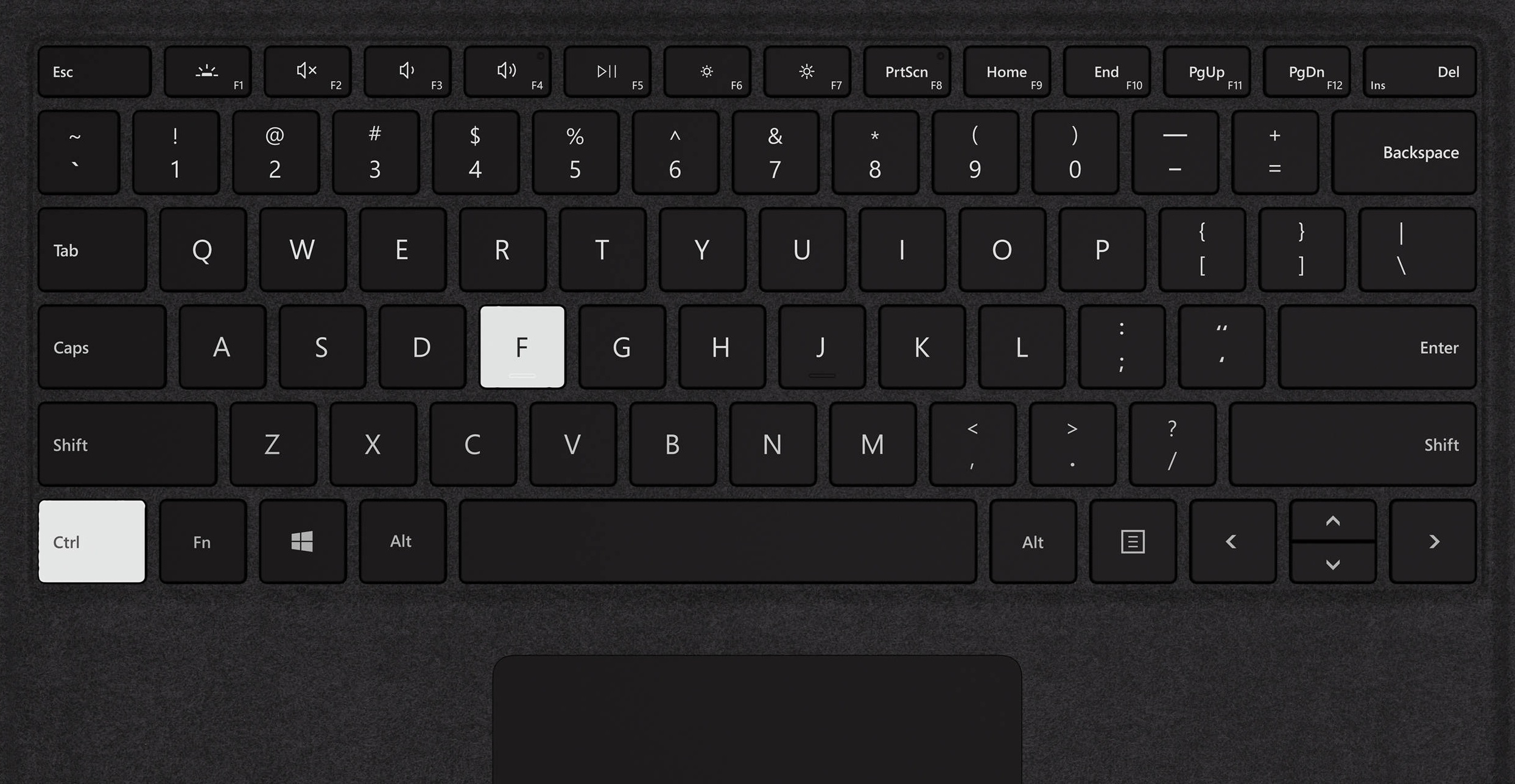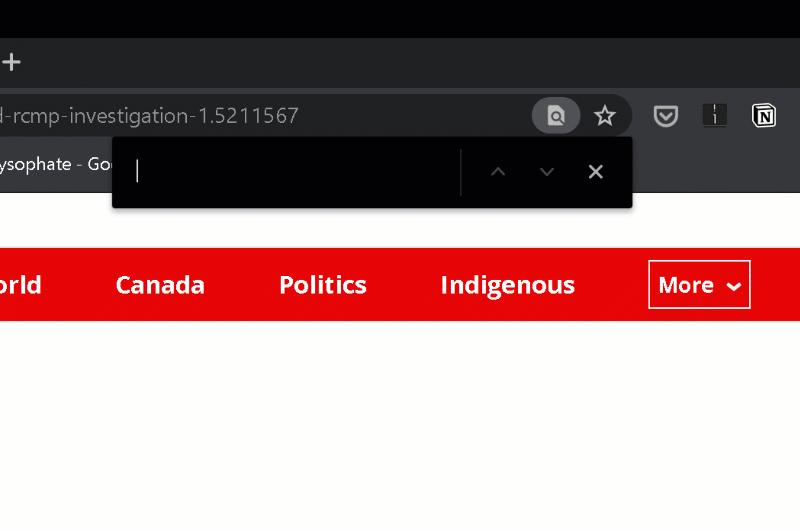
Editor’s note: Fellow Mac people, just imagine “Command-F” in place of every “Ctrl-F.”
In the misinformation field, there’s often a weird dynamic between the short-term and long-term gains folks.
Maybe I don’t go to the right meetings. But if, say, you went to a conference on structural racism and talked about redesigning the mortgage interest deduction to help build black wealth, my guess is most people there would be fine with yes-anding it. Let’s get that done short-term, and we can do other stuff long-term. Put it on the road map.
In misinformation, however, the short-term and long-term people are perpetually at war. It’s as if you went to that structural racism conference, talked about revising the mortgage deduction, and someone asked you how that freed children from cages on the border. And when you said it didn’t, they threw up their hands and said: “See?”
Here’s an example: Ctrl-F. In my classes, I teach our students to use Ctrl-F to find stuff on web pages. And I beg other teachers to teach Ctrl-F as well.
Some folks look at that and say: That’s ridiculous, Mike, you’re not going to de-radicalize Nazis by teaching people Ctrl-F. It’s not going to address cognitive bias. It doesn’t give them deep critical thinking powers, and it doesn’t undo the resentment that fuels disinformation’s spread.
But consider the tactics used by propagandists, conspiracy theorists, bad actors, and the garden-variety misinformed. Here’s a guy with 126,000 followers yesterday implying that the current coronavirus outbreak is potentially a bioweapon developed with the help of Chinese spies. (That’s how I read the implication, at least.)

Screenshotted tweet links to CBC article and claims it describes a husband and wife were Chinese “spies” removed from a facility for sending pathogens back to China.
Now is that true? The tweet links to the CBC, after all. That’s a reputable outlet.
The first thing you have to do to verify it is click the link. And right there, most students don’t know they should do that. They really don’t. It’s where most students fail, actually, their lack of link-clicking.
But the second thing you have to do is see whether the article actually supports that summary. How do you do that?
Well, you could advise people to fully read the article — in which case zero people are going to do that because it takes too long to do for every tweet or email or post. And if it takes too long, the most careless people in the network will tweet unverified claims (because they’re comfortable not verifying) and the most careful people will tweet nothing (because they don’t have time to verify to their level of certainty).
Multiply that out over a few hundred million nodes and you get the web as we have it today: a victim of the Yeats Effect. (“The best lack all conviction, while the worst / Are full of passionate intensity.”). The reckless are happy to post constantly, and the careful barely post at all.
One important reason the best lack conviction, though, is time. They don’t have the time to get to the level of conviction they need. It’s a knotty problem because that higher level of care is precisely what makes their participation in the network so beneficial. (In fact, when I ask people who have unintentionally spread misinformation why they did so, the most common answer I hear is that they were either pressed for time, or had a scarcity of attention to give to that moment).
But what if — and hear me out here — what if there was a way for people to quickly check whether linked articles actually supported the points they’re claimed to? Actually quoted things correctly? Actually provided the context of the original from which they quoted?
And what if, by some miracle, that function was shipped with every laptop and tablet, and available in different versions for mobile devices?
This super-feature actually exists already, and it’s called Ctrl-F. Roll the animated GIF!

In the GIF above, we see someone checking whether key terms in the tweet about the virus researchers were actually found in the article. Here we check “spy,” but we can quickly follow up with other terms: coronavirus, threat, steal, send.
I just did this for the tweeted article, and repeatedly those terms are found either not at all or in links to other unrelated stories. (Except for “threat,” which turned up a paragraph that says the opposite of what the tweet alleges.)
The idea here is not that if those specific words aren’t found, then the contextualization is wrong. But rather than reading every article cited to determine whether it’s been correctly represented and contextualized, a person can quickly identify cases that have a high probability of being miscontextualized and might, therefore, be worth the effort to correct.
And for every case like this, where it’s a reckless summary, there are maybe 10 other cases where the first term helps the user verify it’s good to share. Again, in less than a few seconds.
Now here’s the kicker. You might think that, since this sort of verification triage is so easy to do, we’d be in a better situation than we are today when it comes to misinformation.
One theory is that people know about Ctrl-F, but they just don’t care. They like their disinformation, they can’t be bothered. (I know there’s an issue with doing these sorts of searches on mobile, too, but that’s another post.) If everybody knows about Ctrl-F and doesn’t do it, isn’t that just more evidence that we’re not looking at a skills issue?
Except, if you were going to make that argument, you’d have to show that everybody really does know about Ctrl-F. That wouldn’t be the end of the argument — I could reply that knowing and having a habit are different things — but that’s where we’d start.
So think for a minute. How many people know that you can use Ctrl-F or related functions to search a page? What percentage of internet users? How close to 100 percent is it? What do we have to work with?
Eh, I can’t drag out the suspense any longer. Barely anyone uses Ctrl-F or knows what it does.
Here’s an older finding (2011) from an internal Google survey: Only 10 percent of internet users know how to use control-F. (“90 percent of the U.S. Internet population does not know that,” said Google search anthropologist Dan Russell, saying it was “a sample size of thousands.” “I do these field studies and I can’t tell you how many hours I’ve sat in somebody’s house as they’ve read through a long document trying to find the result they’re looking for. At the end I’ll say to them, ‘Let me show one little trick here,’ and very often people will say, ‘I can’t believe I’ve been wasting my life!'”)
After Google’s number came out, Mozilla (the makers of Firefox) examined its own user data. Mozilla (with permission, of course) tracked the behavior of 69,000 Windows users over a seven-day period. In that span, 81 percent of users didn’t use Ctrl-F even once over a seven-day period. This was a technologically savvy group of people — people who had chosen not only to install Firefox but a beta version of the browser. And even among them, using Ctrl-F was still very much a minority taste.
And the people who don’t use keyboard shortcuts like Ctrl-F are not a random sample of the population. They are disproportionately people who are less comfortable using computers and digital interfaces. In 2004, when researchers at Rice specifically surveyed people who used or didn’t use keyboard shortcuts, they found that the average shortcut user spent 20 hours more a week using computers than non-users. They also rated their level of expertise with computers much higher than non-users (6.7 vs. 3.2 on a 1-10 scale). People with lower digital skills are often people susceptible to misinformation.
I’ve looked for more recent studies and haven’t found much — though I’d expect the widespread transition away from hardware keyboards to phones and tablets has only reduced knowledge.
But I do know that in my classes, many-to-most students have never heard of Ctrl-F. Another portion is aware it can be used in things like Microsoft Word, but unaware it’s a cross-application feature available in web browsers too. When I look over students’ shoulders as they execute web search tasks, I repeatedly find them reading every single word of a document to answer a specific question about its content. In a class of 25 or so, there might be one student who already uses Ctrl-F naturally at the beginning of the class.
People have a limited amount of effort they’ll expend on verification, the lack of knowledge here may be as big a barrier as other cognitive biases. Why we aren’t vigorously addressing issues like this in order to build a more resilient information network (or even to just help students study efficiently!) is something I continue to not understand. Yes, we have big issues. But can we take five minutes and show people how to search?